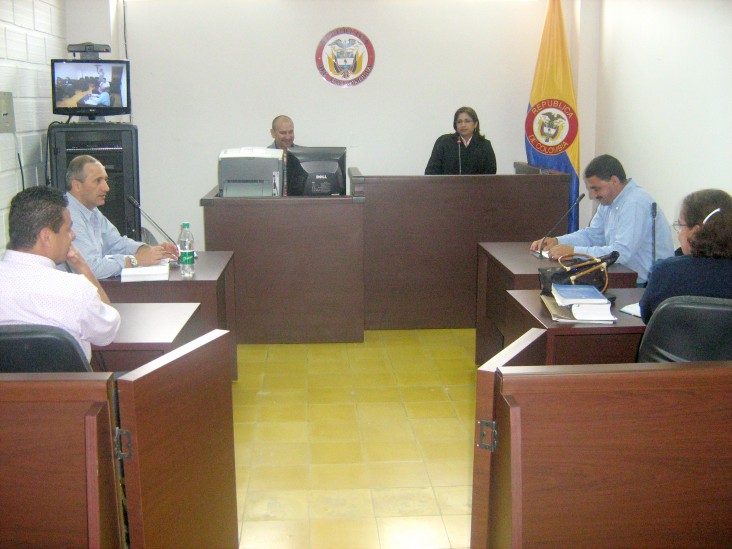
Challenging logistics, high cost of travel and armed conflict in Colombia’s judicial district of Villavicencio made holding court hearings very difficult until a USAID program installed virtual court rooms in the region.
Generally, judicial districts in Colombia do not cover more than one state or department. But, the Judicial District of Villavicencio covers five departments of southeast Colombia, an area the size of the state of Montana, all with limited infrastructure and diffi cult transportation access. Although the area is not densely populated, its specific geopolitical characteristics and the armed conflict in the zone present enormous challenges in meeting the judicial needs of its residents. Before the USAID program, because of safety concerns and distance, judges, public offi cials and the accused often could not attend hearings, obstructing implementation of Colombia’s new Criminal Accusatory System.
“The new criminal accusatory system implied transportation expenses, which we could not cover and have yet to be budgeted,” said María Nydia Prieto, former area director for the Judicial District of Villavicencio. Prieto said an alternative was needed to address the transportation issues, lack of security and limited district budget.
And so, in the district where the postal service does not function properly and people move about in boats on the rivers, high-end technology presented a good solution. USAID installed rooms for virtual hearings that include cameras, lights, microphones, video screens and a satellite antenna to bring together those in a distant municipality with the judge in Villavicencio in real time. The average cost of each branch offi ce installation and the average annual communications cost for 20 branch offices is equivalent to the transportation costs of one judge for 15 hearings. Therefore, holding just 15 hearings per year balances out the cost of operating the virtual court room system in its entirety.
The success of the virtual hearings has been recognized not only in Colombia but at an international level. David F. Varela, senior specialist in public sector reform for the World Bank Latin America and the Caribbean said the World Bank has taken notice. “The Colombian virtual courts’ experience has interested us as an efficient mechanism to reduce costs and preserve the oral nature of the proceedings, allowing face to face contact between the judge, the accused and the key witnesses, the security of the accused and the witnesses, and expedited decisions,” said Varela.
Over the first 11 months of operation, more than 150 virtual hearings had been carried out in the USAID-funded court rooms. The justice system has been able to comply with legal procedures and resolve important matters from a distance.







Comment
Make a general inquiry or suggest an improvement.